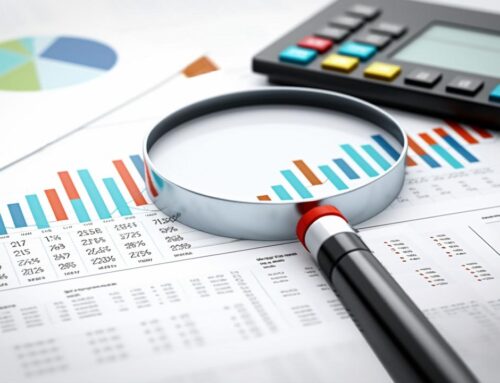If you’ve ever found yourself wading through a sea of information, attempting to sift the gold from the silt, then you know that collecting relevant data is more of an art than mere routine. In the world of business, data isn’t just numbers or facts; it’s the lifeblood that informs decision-making. Can you imagine steering a ship without a compass? That’s akin to making business decisions without reliable data. This article aims to be your North Star, guiding you through the intricate maze of data collection for business analysis. Here, you’ll unearth valuable tips, best practices, and wisdom gleaned from experts in the field. Ready to dive in?
Tips on Collecting Data for Business Analysis
Table of Contents
- Beginning with a Clear Objective
- Methods of Data Collection
- Ensuring Data Quality
- Storing and Protecting Your Data
- Frequently Asked Questions
- Final Thoughts
- Sources
Beginning with a Clear Objective
Imagine you’re embarking on a road trip. You wouldn’t set out without knowing your destination or having a map in hand, would you? Similarly, in the world of business data collection, starting without a clear objective is akin to setting off on a journey without a destination in mind. It’s wandering aimlessly. Here’s a deeper dive into why this initial clarity is so vital and how to ensure you’ve nailed down your objectives:
Why Clear Objectives Matter
- Direction: With a well-defined objective, you know exactly what you’re looking for. This reduces wasted effort, time, and resources.
- Relevance: By knowing your objective, you can ensure that every piece of data you gather directly contributes to your end goal. This keeps your data pool relevant and actionable.
- Measurement and Analysis: A clear objective provides a framework for measurement. It becomes your yardstick, helping you ascertain if the data collected is actually moving the needle in the desired direction.
Crafting Your Objective
- Be Specific: Vague objectives lead to vague results. Instead of aiming to “understand customer preferences”, drill deeper. Do you want to know which product features your customers value the most? Or are you trying to gauge their price sensitivity?
- Make it Measurable: Ensure your objective has a quantifiable aspect. How will you measure success? By percentage increase, numerical values, or perhaps a certain threshold?
- Ensure it’s Achievable: It’s great to aim high, but your objectives should also be rooted in reality. Take into account your resources, time constraints, and other relevant factors.
- Relevance to Larger Goals: Your data collection objective should ideally tie back to your broader business goals. If your company’s primary aim for the year is to enhance customer retention, then your data collection should pivot towards understanding factors that influence retention.
- Time-Bound: Give your objective a deadline. This not only aids in maintaining focus but also ensures timely execution.
Redefining When Necessary
Business landscapes are dynamic. As such, it’s okay to revisit and redefine your objectives based on changing circumstances, new insights, or unexpected challenges. Being adaptable ensures you remain aligned with your evolving business needs.
Setting a clear objective is the anchor of your data collection journey. It’s the guiding star, ensuring every step you take is deliberate, meaningful, and value-driven. Remember, without a clear “why”, the “what” can quickly become overwhelming.
Methods of Data Collection
As a business analyst or a data enthusiast, you’re essentially a modern-day treasure hunter. But instead of gold and jewels, your treasure is valuable insights and knowledge. And just as treasure hunters use a variety of tools and techniques to locate hidden treasures, you too have an array of methods at your disposal to collect the data you seek. Let’s navigate through the popular methods and understand the intricacies of each.
Surveys and Questionnaires
- Strengths: Surveys allow for data collection from a large audience in a structured manner. This can be especially beneficial for understanding general sentiments or preferences.
- Challenges: Crafting effective questions requires expertise. There’s also the danger of biases affecting the responses.
- Best for: Gauging customer satisfaction, market research, and product feedback.
Observational Techniques
- Strengths: By simply observing, one can gather genuine, unfiltered data. It’s raw and real, unaffected by the Hawthorne effect where people modify their behavior if they know they’re being observed.
- Challenges: Can be time-consuming and may require trained observers to derive meaningful insights.
- Best for: Studying user behavior, especially in retail environments or user testing scenarios.
Interviews
- Strengths: One-on-one interactions can provide deep insights and allow for follow-up questions based on interviewee responses.
- Challenges: Time-intensive, potential for interviewer bias, and the qualitative nature can sometimes make analysis challenging.
- Best for: Deep dives into specific issues, understanding complex behaviors, or when seeking expert opinions.
Data Mining
- Strengths: With the proliferation of digital platforms, data mining provides an avenue to tap into vast amounts of data that’s already out there, waiting to be harnessed.
- Challenges: Requires sophisticated tools and expertise. Additionally, the vastness of available data can sometimes make it hard to discern quality from quantity.
- Best for: Analyzing digital footprints, e-commerce behaviors, and social media sentiments.
Experiments and Testing
- Strengths: Experiments, especially when carried out in controlled environments, can help establish causality rather than mere correlation.
- Challenges: Designing effective experiments can be complex, and external factors can sometimes skew results.
- Best for: Product development, quality testing, and situations where hypotheses need to be validated.
Case Studies
- Strengths: An in-depth exploration of a specific situation or a particular entity over time can offer profound insights into complex issues.
- Challenges: The depth and specificity can sometimes make it hard to generalize findings to broader populations.
- Best for: Understanding particular phenomena, success stories, or exploring challenges in detail.
Choosing the right method is akin to selecting the right fishing net. Some nets are broad and expansive, capturing a wide range; others are specific, meant for particular types of catch. The method you choose should align with your objectives, resources, and the nature of the insights you’re after. After all, using the right tool for the right job isn’t just wisdom; it’s efficiency in action.
Ensuring Data Quality
Quality trumps quantity every single time. Imagine brewing a cup of coffee with impure water. No matter how premium your coffee beans are, the end result will be less than satisfying. Similarly, even the most sophisticated analysis tools can’t save your project if the data you’re using is of poor quality. Let’s dive deeper into the art and science of ensuring top-notch data quality.
Defining Data Quality
First, it’s imperative to understand what data quality means. At its core, high-quality data is:
- Accurate: Does it represent the truth?
- Complete: Are there missing pieces?
- Reliable: Can you trust the source?
- Relevant: Does it align with your objectives?
- Timely: Is the data current or outdated?
Strategies to Ensure Data Quality
- Source Verification: Always ensure that your data sources are credible. For instance, if using external databases or agencies, do they have a track record of providing reliable data?
- Data Cleaning: This involves processes like removing duplicates, correcting errors, and filling in missing values. Think of it as housekeeping for your data.
- Regular Audits: Periodically checking your data for anomalies or inconsistencies can help catch and rectify errors. It’s like a health check-up for your data.
- Validation Rules: Implement rules or constraints to ensure the data entered meets specific criteria. For instance, an email field might require a valid email format.
- Feedback Loops: If collecting data from individuals (like surveys or feedback forms), providing a mechanism for them to update or correct their information can be invaluable.
- Train Your Team: Human error is a significant contributor to data inaccuracies. Ensure anyone involved in data collection is trained and understands the importance of data quality.
- Implement Data Quality Tools: There are numerous software tools available that can automate many of the tasks associated with ensuring data quality, from cleaning to validation.
The Impact of Poor Data Quality
Ensuring top-tier data quality isn’t just a recommendation; it’s a necessity. The repercussions of poor quality data can be severe:
- Misguided Decisions: Decision-making based on flawed data can lead businesses astray, causing financial losses or missed opportunities.
- Wasted Resources: Bad data can result in wasted time, money, and effort as teams may work on inaccurate or irrelevant insights.
- Damaged Credibility: If stakeholders or customers realize that your data or insights are unreliable, it can harm your organization’s reputation.
Data quality is the backbone of any data-driven project or initiative. It’s the difference between making decisions based on a clear, crisp photograph versus a blurry, distorted image. And in the competitive landscape of business, having that clear picture can make all the difference. So, the next time you’re knee-deep in data, take a moment to reflect: Is this the best quality I can get? Your project’s success might just hinge on the answer.
Storing and Protecting Your Data
Data is the new currency. And much like treasures of old, this modern-day treasure needs to be stored securely, lest it falls into the wrong hands or deteriorates over time. Just as you wouldn’t leave a gold bar out in the open, your precious data requires safeguarding. Let’s delve into the intricacies of how to store and protect this invaluable asset.
Choosing the Right Storage Solutions
Before we talk protection, we need to ensure we’re storing data correctly:
- Cloud Storage: The modern go-to for many businesses, cloud storage offers scalability, accessibility from any location, and often robust backup systems. Services like AWS, Google Cloud, and Microsoft Azure are major players here.
- On-Premise Servers: For businesses that prefer more direct control, maintaining on-site servers can be a choice. This method offers faster access speeds but can require a significant upfront investment and ongoing maintenance.
- Hybrid Solutions: As the name suggests, it combines cloud and on-premise storage, offering the benefits of both.
- Data Warehouses: For analytics-intensive organizations, data warehouses like Snowflake, Redshift, or BigQuery can be invaluable. They’re optimized for analysis and can handle massive volumes.
Safeguarding Your Treasure: Protection Strategies
- Encryption: This is akin to creating a secret code for your data. Even if someone gets their hands on it, they won’t understand it without the decryption key. Both data in transit and at rest should be encrypted.
- Backup Regularly: Imagine if your stored data was a unique painting. Regular backups are like creating copies of this masterpiece, ensuring it’s never truly lost.
- Access Controls: Not everyone should have access to everything. Implementing role-based access ensures that only those who need to see certain data can access it.
- Firewalls & Anti-malware: These are your digital guards, preventing unwanted intruders from breaching your data vaults.
- Regular Updates: Ensure all your software, especially security software, is updated regularly. Think of it as maintaining the integrity of your fortress walls.
- Educate Your Team: The human element is often the weakest link. Regular training sessions can ensure your team is aware of threats like phishing attacks and how to avoid them.
- Physical Security: For on-premise solutions, physical access controls (like biometrics or key card systems) can prevent unauthorized physical access to servers.
The Importance of Data Protection
Data breaches aren’t just a tech problem; they’re a public relations nightmare. Beyond the immediate financial implications, the damage to an organization’s reputation can be severe and long-lasting.
Moreover, many regions have strict data protection regulations (think GDPR in the European Union). Non-compliance can result in hefty penalties.
In essence, think of your data as the crown jewels of your business empire. It’s not just about storage; it’s about ensuring that the treasure remains uncompromised and intact, today, tomorrow, and for years to come. After all, a treasure that’s lost or stolen loses all its value, doesn’t it?
Frequently Asked Questions
Final Thoughts
Collecting data for business analysis is like assembling the pieces of a jigsaw puzzle. When you have all the right pieces, and they’re of good quality, the bigger picture becomes clear. The key is to start with a clear vision, ensure the data you collect aligns with that vision, and protect that data with the ferocity of a lion guarding its pride. Remember, in business, data isn’t just power; it’s the roadmap to success.
Sources
- Data Collection Techniques – Business Analyst Learnings
- Smith, J. (2021). The Age of Data. Data Publishers.
- Williams, P. (2022). Data Security in the Modern Age. Tech Today Publications.











Leave A Comment